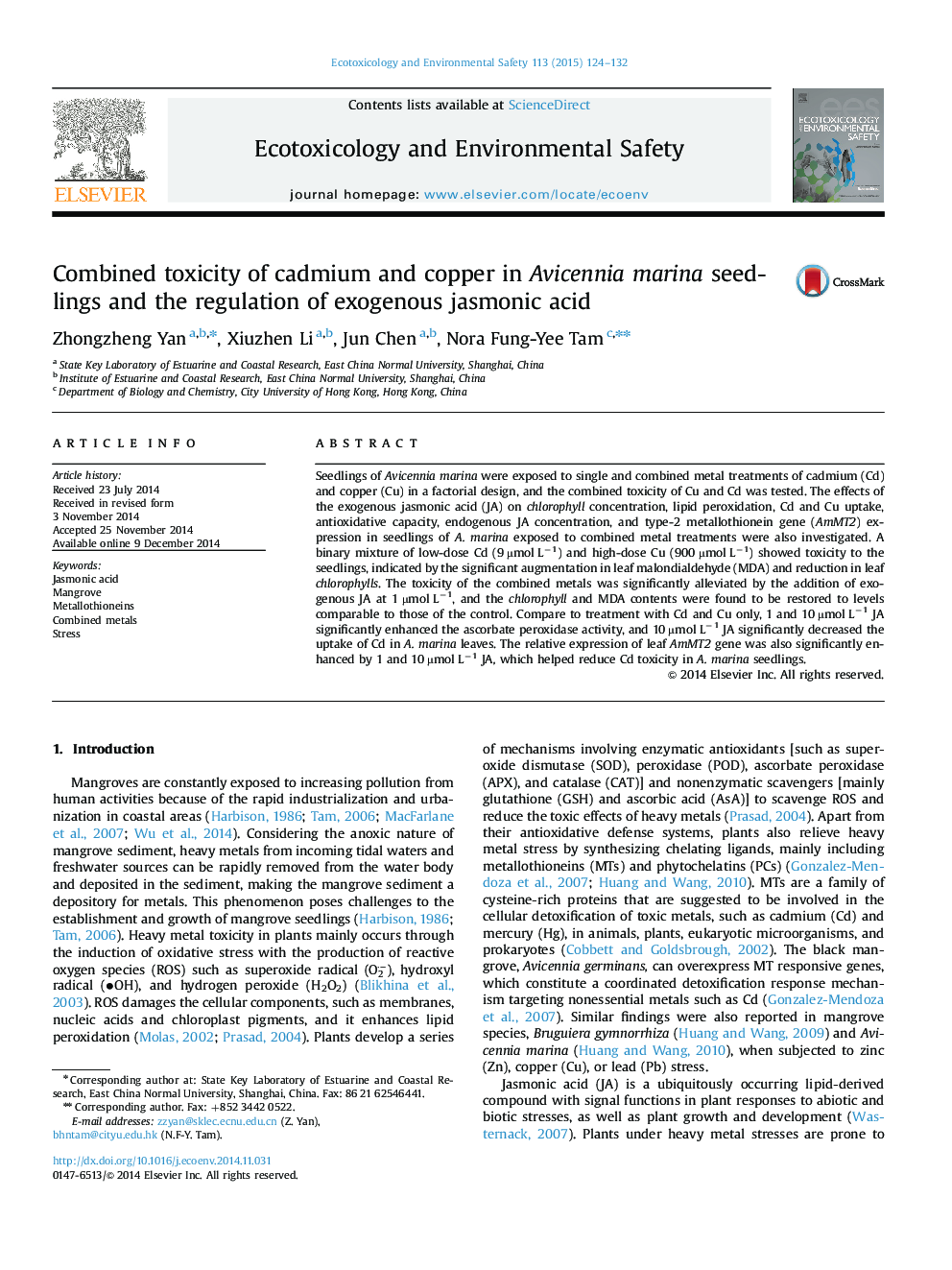| Article ID | Journal | Published Year | Pages | File Type |
|---|---|---|---|---|
| 4419671 | Ecotoxicology and Environmental Safety | 2015 | 9 Pages |
•The combined toxicity of Cu and Cd was investigated in Avicennia marina.•The effect of jasmonic acid (JA) on binary metal toxicity in A. marina was tested.•JA at 1 µmol L−1 restored chlorophyll and MDA contents comparable to control.•JA at 1 µmol L−1 significantly enhanced the leaf APX activity.•JA at 1 µmol L−1 significantly upregulated the expression of leaf AmMT2 gene.
Seedlings of Avicennia marina were exposed to single and combined metal treatments of cadmium (Cd) and copper (Cu) in a factorial design, and the combined toxicity of Cu and Cd was tested. The effects of the exogenous jasmonic acid (JA) on chlorophyll concentration, lipid peroxidation, Cd and Cu uptake, antioxidative capacity, endogenous JA concentration, and type-2 metallothionein gene (AmMT2) expression in seedlings of A. marina exposed to combined metal treatments were also investigated. A binary mixture of low-dose Cd (9 µmol L−1) and high-dose Cu (900 µmol L−1) showed toxicity to the seedlings, indicated by the significant augmentation in leaf malondialdehyde (MDA) and reduction in leaf chlorophylls. The toxicity of the combined metals was significantly alleviated by the addition of exogenous JA at 1 µmol L−1, and the chlorophyll and MDA contents were found to be restored to levels comparable to those of the control. Compare to treatment with Cd and Cu only, 1 and 10 µmol L−1 JA significantly enhanced the ascorbate peroxidase activity, and 10 µmol L−1 JA significantly decreased the uptake of Cd in A. marina leaves. The relative expression of leaf AmMT2 gene was also significantly enhanced by 1 and 10 µmol L−1 JA, which helped reduce Cd toxicity in A. marina seedlings.
